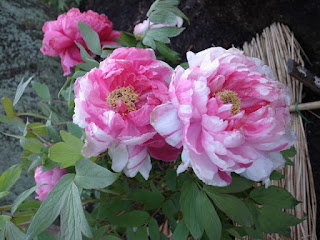In Japan, there are days in spring and autumn when we make offerings to our ancestors, and they are called "お彼岸(ひがん)Ohigan.”
Kinako (soybean flour) is another traditional Japanese food. You can find some Japanese sweets made with kinako here.
The green one in the photo is covered with 青(あお)のりdried seaweed and has anko inside, just like the kinako version. It has a slight smell of the sea.
When is Ohigan?
These dates vary every year, but for 2021, the dates for the Ohigan are as follows.
Spring Ohigan: "March 17 to March 23
Autumnal Ohigan: September 20 to September 26
The spring Ohigan is determined based on the dates when the weather changes from spring to summer, and the autumn Ohigan is determined based on the dates when the weather changes from summer to autumn, and in both cases the length of day and night are almost the same.
What to do on the Ohigan?
The Ohigan is not decorated in the same way as Obon, and people generally visit graves and hold memorial services. However, in some regions, there are events unique to the Ohigan period.
For the information about Obon, please click here.
Wagashi for the Ohigan
This is the most popular wagashi to eat during the Ohigan.
Name for spring
In spring, it is called "ぼた餅(もち) Botamochi". Its name comes from 牡丹(ぼたん) the peony flowers that bloom in spring.
Name for autumn
In autumn, this Japanese sweet is called Ohagi. The name comes from the flower of this 萩(はぎ)bush clover that blooms in autumn.
Since it's autumn now, I'll use the name "Ohagi" to describe the ingredients.
What are the ingredients for Ohagi?
The one in the middle is the most famous Ohagi.
Ohagi is a sticky rice ball covered with あんこ sweet red bean paste.
There are also o-hagi covered with other ingredients instead of anko.
This is an ohagi covered with kinako, but it has anko inside.
The green one in the photo is covered with 青(あお)のりdried seaweed and has anko inside, just like the kinako version. It has a slight smell of the sea.
Memories of Ohagi
The ohagi sold at the market is very sweet, but I prefer my mother's homemade, less sweet ohagi.
My mother used to make a lot of ohagi during the ohigan.
They are not too sweet, so I can eat a lot of them.😁
I miss my mother very much...
This year, I would like to send my thoughts to my ancestors from Kyoto, a place far away from my parents' home.🙏





Comments
Post a Comment